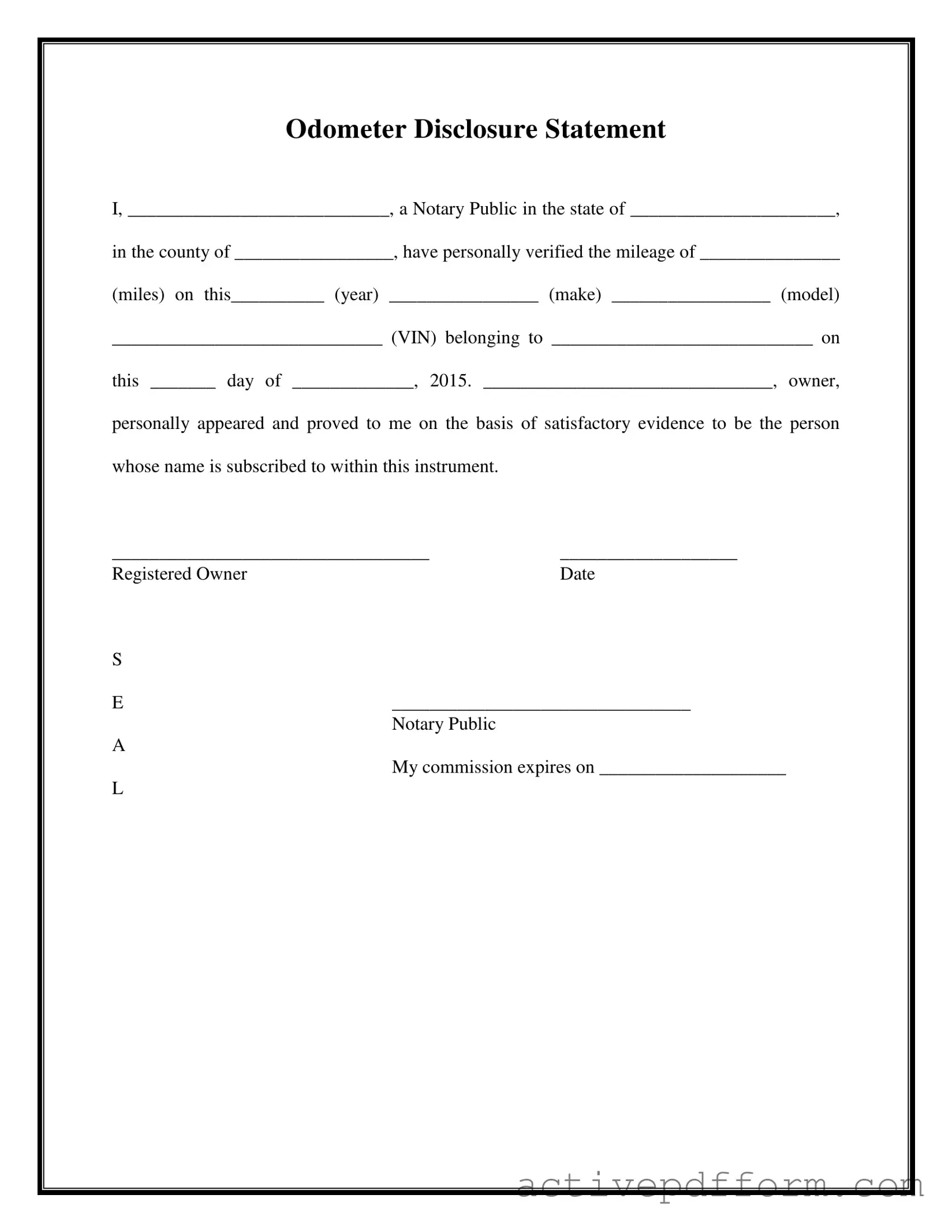Free Notarized Odometer Statement Template
The Notarized Odometer Statement is a crucial document used to verify the mileage of a vehicle during a sale or transfer. This form provides assurance to buyers that the mileage stated is accurate, helping to prevent fraud and ensuring transparency in the transaction. Ready to fill out the form? Click the button below!
Access Notarized Odometer Statement Editor Here

